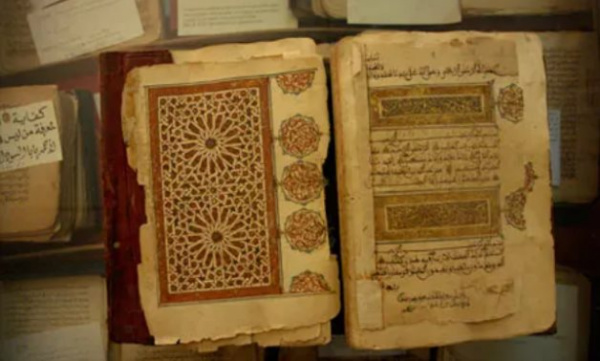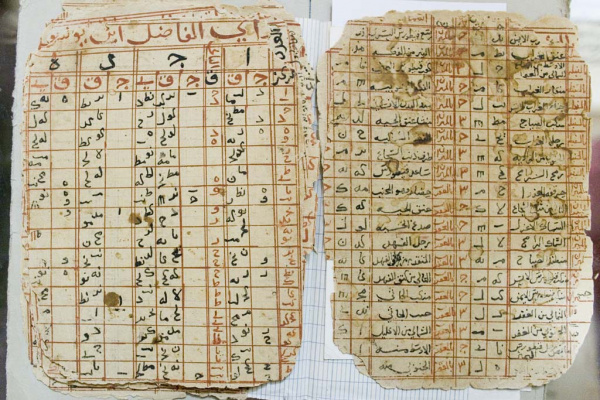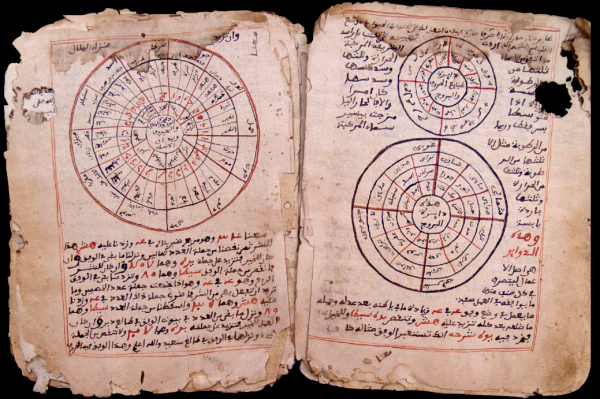Catalogues of Arabic manuscripts in West Africa, particularly in Mali, include books preserved in over 100 public libraries.
One-third of all existing manuscripts (314 titles) were written by 204 known scholars. A quarter of them were from West Africa. Most of these manuscripts date back to the XIX century, but have deeper historical roots at their core.

(Photo: hdbr.hypotheses.org)
According to archaeological sources, manuscripts in West Africa are not limited to Timbuktu manuscripts found in Mali. Arabic scrolls were discovered in Mauritania, Niger and Nigeria.
The first contact between North Africa and Timbuktu took place through gold trade in West Africa. That trade also brought Islamic culture through the Sahara desert, and the first mention of manuscripts in Timbuktu was in the XV century AD.

Astronomical tables of Timbuktu manuscripts (Photo: astropro.ru)
In fact, Timbuktu was just one of several cities in sub-Saharan Africa that attracted scholars from all over the world. Those cities offered excellent Islamic education as early as the XV century AD. It was the so-called ‘golden age’ of Timbuktu, when its scholars were famous throughout North Africa. At that time, manuscripts on mathematics, astronomy, art, medicine, philosophy and religion could be found in every house. Some created vast libraries, for instance, the library at Mamma Haidara’s house, which holds about 20 000 manuscripts.
Interest in the study of the Arabic language in West Africa re-emerged in the XIX century after Islamic reforms. So far, the oldest manuscripts in West Africa are mostly from that period.
With the decline of science in Timbuktu in the XVII century, Islamic education emerged in the nomadic centres in western modern Mauritania. This country also has a collection of manuscripts based on the contents of 80 private libraries.

Parchment manuscripts, Timbuktu, XIII-XVII centuries (Photo: hgbellevue.com)
The most important subjects in West African Arabic manuscripts, apart from manuscripts on the Arabic language (vocabulary, grammar, presentations and pre-Islamic poetry), include the prophetic mission of Muhammad, and the rules of reading the Quran (tajwid) and Sufism.
In order to explain the Quran, medieval teachers often translated key Arabic words into the African language (written in Arabic script). Those explanatory lines were abundant in many West African textbooks. This practice became the first step towards writing classic African literary works in Arabic.
GSV "Russia - Islamic world"
